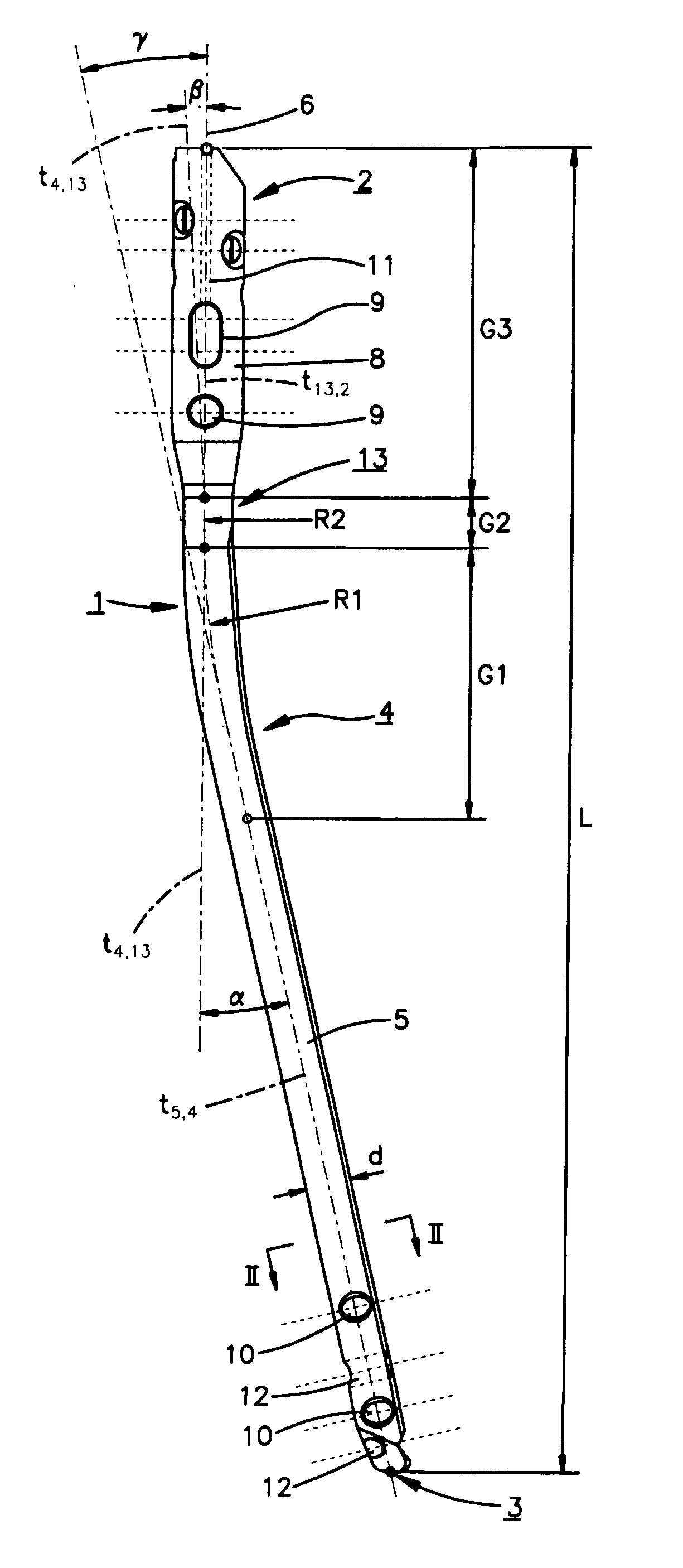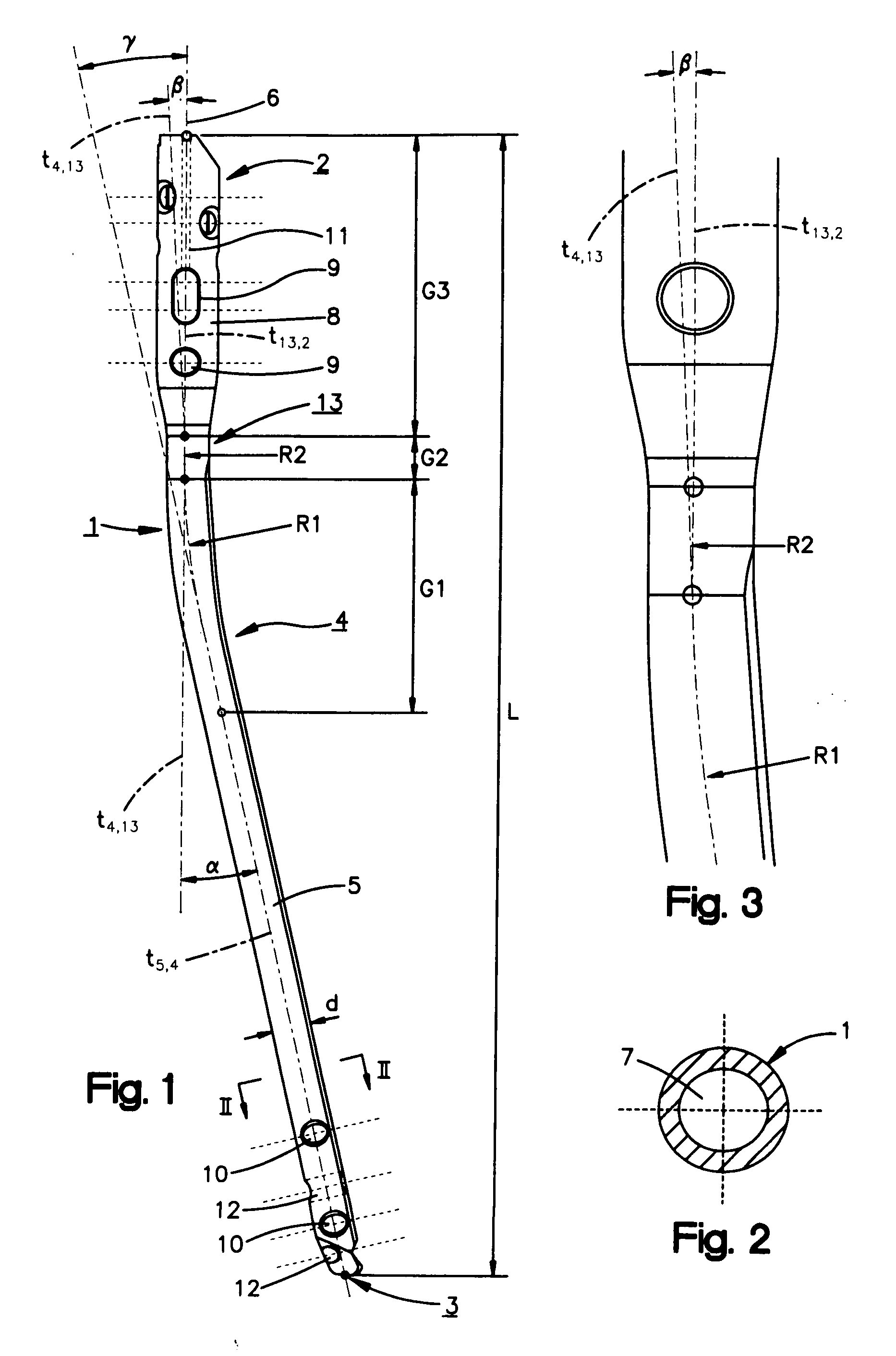Intramedullary nail
a technology of intramedullary nail and nail, which is applied in the field of intramedullary nail, can solve the problems of inability to use in relatively linear tubular bones, and achieve the effect of slight curvature of the intramedullary nail
- Summary
- Abstract
- Description
- Claims
- Application Information
AI Technical Summary
Benefits of technology
Problems solved by technology
Method used
Image
Examples
Embodiment Construction
[0037] The intramedullary nail 1, shown in FIGS. 1 to 3, may comprise a central axis 6, a proximal end part 2, a distal end part 3 that is suitable for introduction into the intramedullary space and two curved sections 4; 13 disposed axially one behind the other. The total length of the intramedullary nail “L” ranges from about 200 mm to about 500 mm. Axially, the proximal end part 2 adjoins the second, curved section 13 and is constructed as a straight, proximal section 8 of length G3. Length G3 may be less than or equal to the total length L of the intramedullary nail and preferably ranges between about ⅙L to about ⅓L. The distal end part 3 may be constructed as a straight, distal section 5 with a length “l” ranging from about 0.20L to about 0.55L, and preferably from about 0.25L to about 0.50L. The first curved section 4 may have a length G1 that is less than or equal to L, and preferably ranges from about 0.2L to about 0.4L. The first curved section may have a radius of curvatur...
PUM
 Login to View More
Login to View More Abstract
Description
Claims
Application Information
 Login to View More
Login to View More - R&D
- Intellectual Property
- Life Sciences
- Materials
- Tech Scout
- Unparalleled Data Quality
- Higher Quality Content
- 60% Fewer Hallucinations
Browse by: Latest US Patents, China's latest patents, Technical Efficacy Thesaurus, Application Domain, Technology Topic, Popular Technical Reports.
© 2025 PatSnap. All rights reserved.Legal|Privacy policy|Modern Slavery Act Transparency Statement|Sitemap|About US| Contact US: help@patsnap.com


